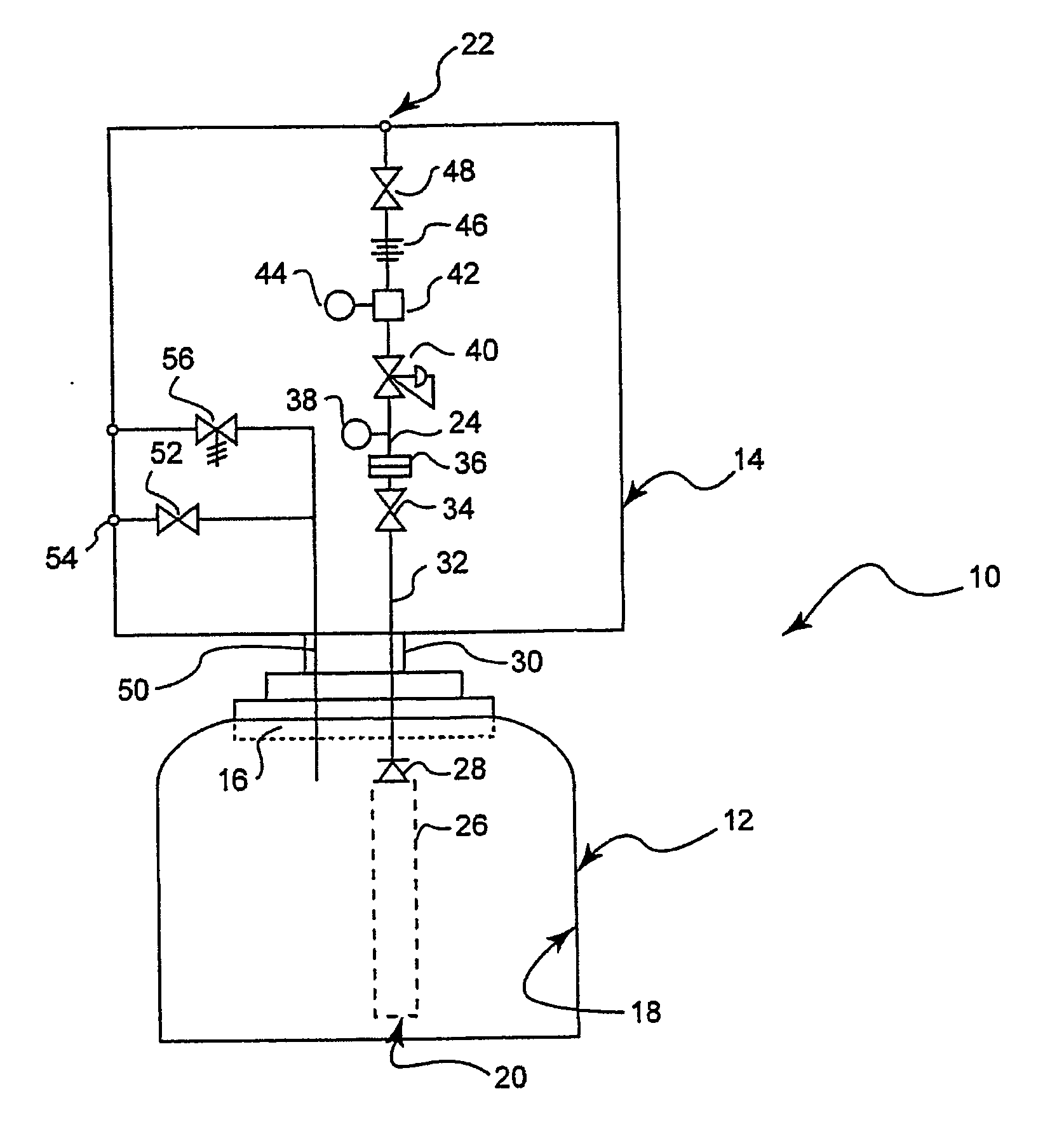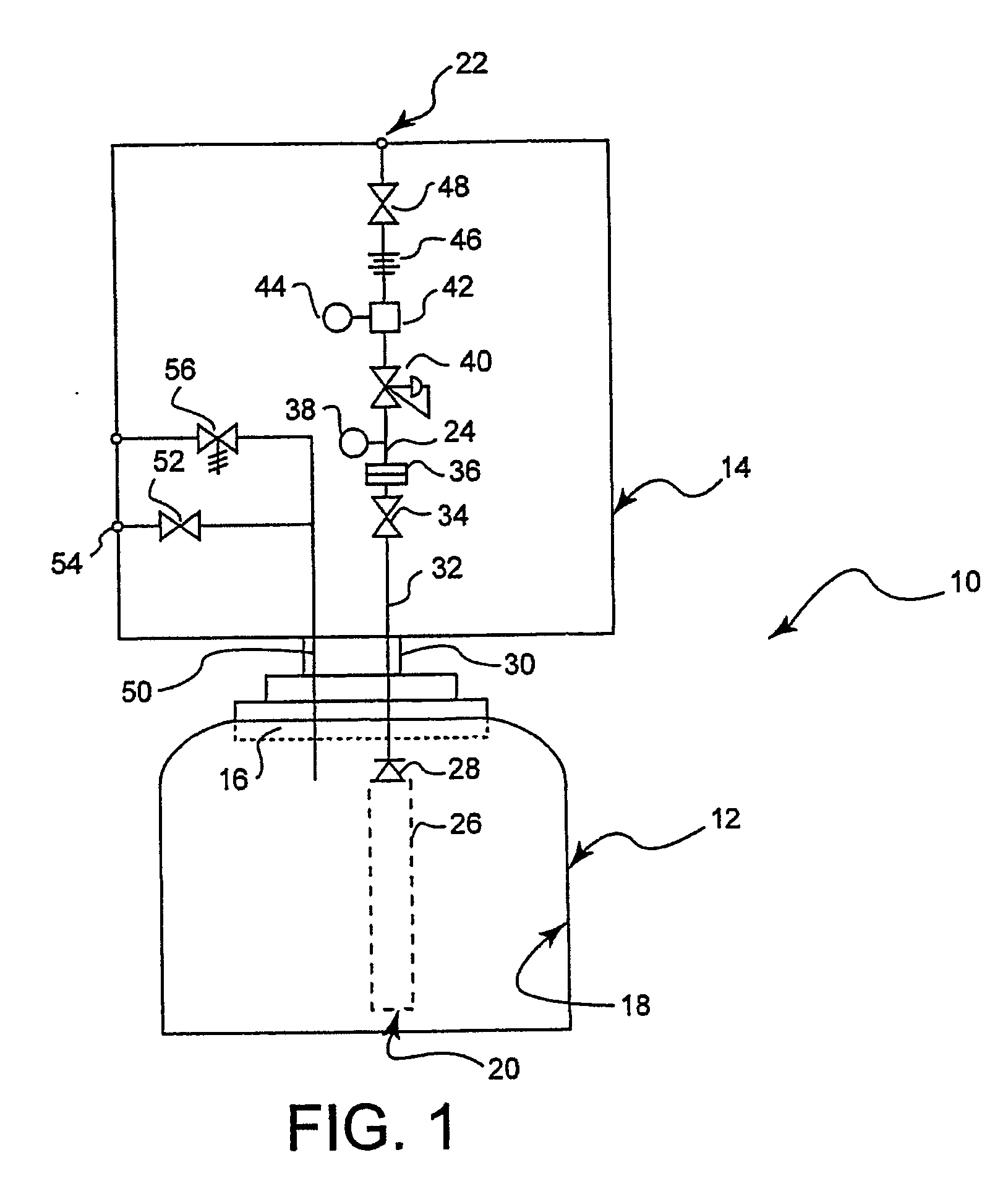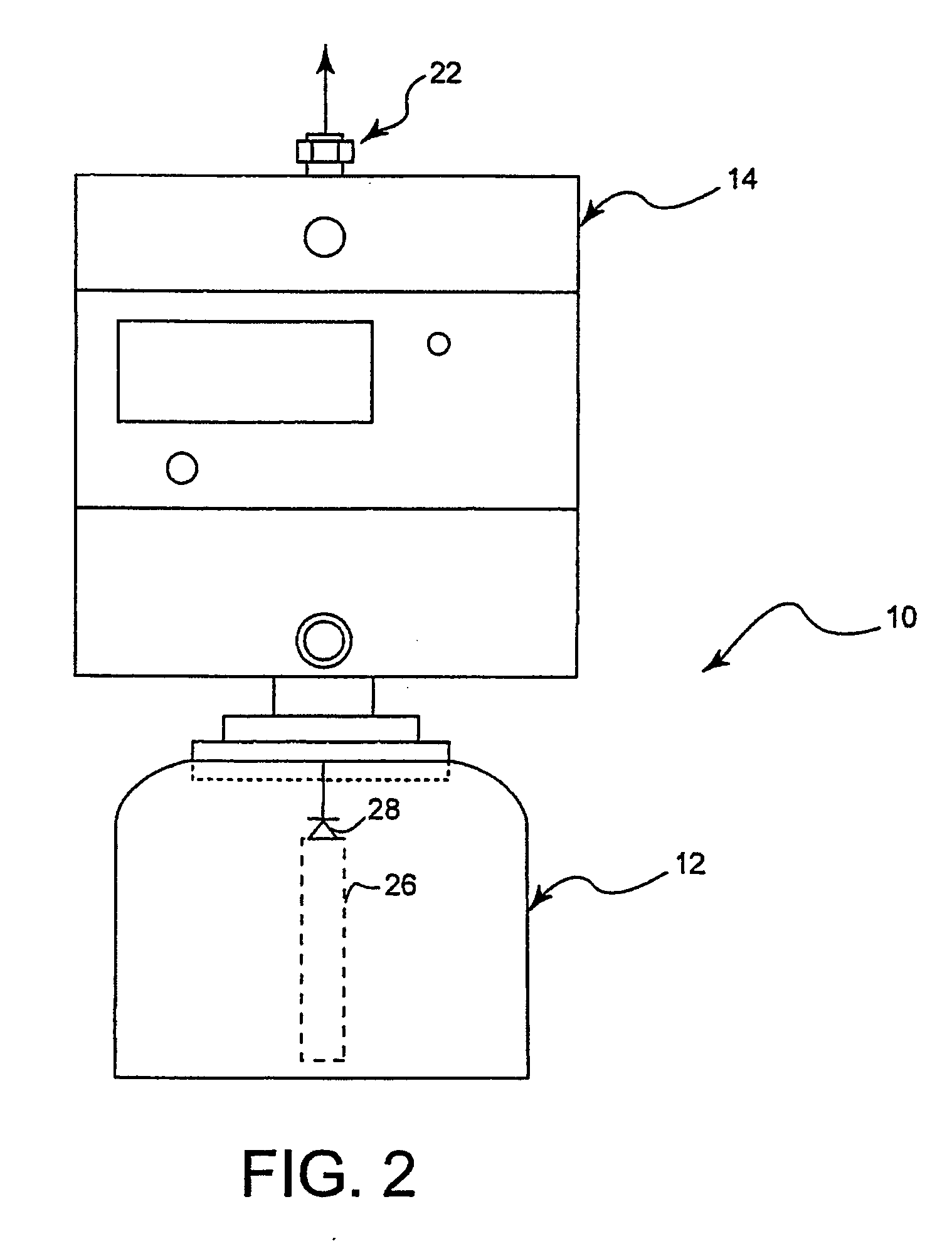Assembly and method for containing, receiving and storing fluids and for dispensing gas from a fluid control and gas delivery assembly having an integrated fluid flow restrictor
a technology of fluid control and gas delivery, which is applied in the direction of liquid handling, container discharging methods, packaged goods types, etc., can solve the problems of uncontrollable release of hazardous fluids, catastrophic consequences, and hazardous use of fluids
- Summary
- Abstract
- Description
- Claims
- Application Information
AI Technical Summary
Benefits of technology
Problems solved by technology
Method used
Image
Examples
Embodiment Construction
Referring now to the drawings, wherein like reference numbers refer to like elements throughout the several views, FIGS. 1 through 6 show several configurations of an assembly for containing and delivering hazardous fluids from a pressurized container. Because the common details are given the same reference numbers in each of the figures, their construction and operation will not be reiterated for each figure.
For the purposes of the present invention, the term “fluid” includes gases and liquids. The term “gas” encompasses both a permanent gas and a vapor of a liquefied gas. Unless otherwise indicated, all pressures discussed will be absolute pressures.
Permanent gases are gases that cannot be liquefied by pressure alone at ambient temperature, and for example can be supplied in fluid containers at pressures up to 300 bar gage. Examples are argon and nitrogen.
Fluids that liquefy under pressure as they are compressed for filling into a fluid container are not permanent gases and...
PUM
| Property | Measurement | Unit |
|---|---|---|
| Temperature | aaaaa | aaaaa |
| Temperature | aaaaa | aaaaa |
| Temperature | aaaaa | aaaaa |
Abstract
Description
Claims
Application Information
 Login to View More
Login to View More - R&D
- Intellectual Property
- Life Sciences
- Materials
- Tech Scout
- Unparalleled Data Quality
- Higher Quality Content
- 60% Fewer Hallucinations
Browse by: Latest US Patents, China's latest patents, Technical Efficacy Thesaurus, Application Domain, Technology Topic, Popular Technical Reports.
© 2025 PatSnap. All rights reserved.Legal|Privacy policy|Modern Slavery Act Transparency Statement|Sitemap|About US| Contact US: help@patsnap.com



